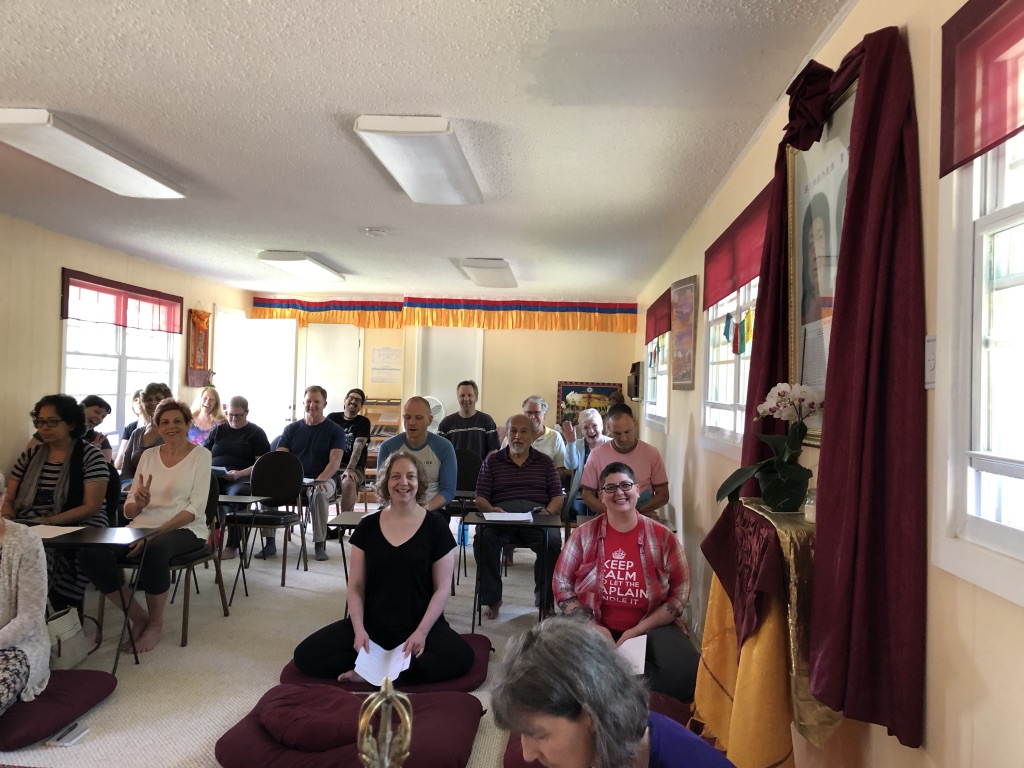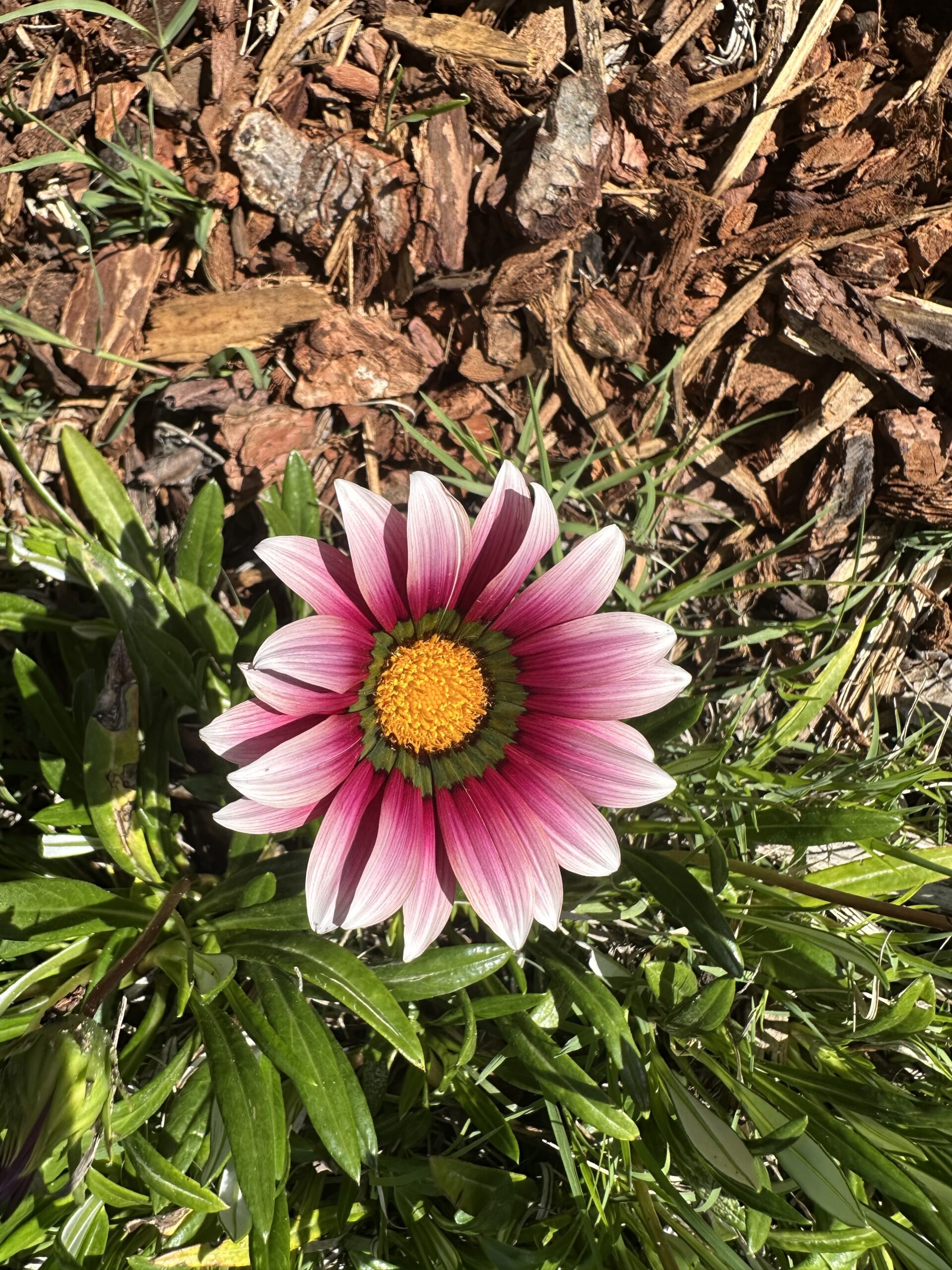
“There are two types of bodhicitta. There is bodhicitta in the holy sense and bodhicitta in the worldly sense. Bodhicitta in the worldly sense can be roughly divided into “vow bodhicitta” and “action bodhicitta.” The practice of vow and action bodhicitta includes a myriad of dharma methods, such as those relating to sentient beings, non-sentient things, the four great elements, one’s own six elements, as well as breathing, the ear base, the eye base and other bases, inner and outer mandalas, and ritualistic chanting. Whether it is bodhicitta in the worldly sense or the holy sense, if you are guided by the two sets of seven branches of bodhicitta, that is the highest, most excellent, and most complete form of bodhicitta.
Each living being in the six realms of reincarnation within the three spheres of existence has the right to cultivate bodhicitta. However, most living beings do not have the karmic affinity. Thus, they practice a fragmented and shrunken version of bodhicitta dharma. As a result, they frequently harbor the misconceptions that only those with an enlightened mind can practice bodhicitta or bodhicitta is the dharmakaya state of enlightenment. Of course, we do not deny these are existing parts of bodhicitta. However, these conceptions omit the practice of bodhicitta dharma by those living beings who do not have an enlightened mind. More importantly, bodhicitta is not dependent upon an enlightened mind or an unenlightened mind. Bodhicitta is the power of vows made out of great compassion by those living beings who learn Buddhism in any of the six realms of reincarnation within the three spheres of the universe as well as the power of vows made out of great compassion by all holy beings in the dharma realm. Bodhicitta is actual conduct based upon great compassion that aids living beings in becoming Buddhas or Bodhisattvas. It is the mind of love in the holy sense that the enlightened and the unenlightened or the holy and the ordinary both have.
With respect to bodhicitta, those who are enlightened use their enlightened state of virtue and realization, correct practices, and propagation of the true dharma to teach and enlighten living beings so that those living beings will become Buddhas. With respect to bodhicitta, those who are not yet enlightened vow out of great compassion that living beings and oneself shall together attain accomplishment in the dharma and liberation. They help other people enter the path of the true dharma of the Buddha, vowing that they will become Bodhisattvas and Buddhas. To such persons, bodhicitta dharma is the virtue of aiding others to become accomplished in the dharma. Because they benefit others, they receive merit. They thereby increase the causes leading to their becoming Bodhisattvas.
The manifestation of bodhicitta is expressed through actual practice involving the three karmas, which practice reflects great compassion. Any true cultivator, no matter whether he or she is ordinary or holy, has the right to arouse bodhicitta and should arouse bodhicitta. That is because bodhicitta is not an enlightened mind possessed only by holy people. Rather, it is conduct based upon great compassion. It is the planting of causes based upon a vow that oneself and others become enlightened. Bodhicitta does not only include the ten good characteristics, the four limitless states of mind (the four immeasurables), the six paramitas (perfections), and the four all-embracing Bodhisattva virtues (four methods that Bodhisattvas employ to approach and save living beings). Rather, it includes the entire Tripitaka, the esoteric scriptures, and all dharma transmitted orally, through the ears, or telepathically that engenders conduct that is greatly compassionate, is in accord with the dharma, and benefits and saves living beings.
Thus, the bodhicitta is ultimate truth in a broad sense. With respect to the Buddha, bodhicitta is the three bodies, the perfect wisdom of Buddha that is summarized in four truths, and the mind of anuttara-samyak-sambodhi. With respect to a Bodhisattva, bodhicitta is propagating the dharma and benefiting and saving living beings out of great compassion. With respect to an enlightened being, bodhicitta is not being attached to the characteristics or distinctive features of things and not engaging in intellectual frivolity or conceptual elaborations. This is his or her original nature. The true emptiness of original nature is wonderful existence. It is the ultimate truth of all conditional dharmas. This truth neither arises nor ceases. With respect to an ordinary person, bodhicitta is compassionately helping other people and vowing that they learn Buddhism and attain liberation.”
This section of What Is Cultivation? is extremely important. The bold type I added, but the quote is from the famous discourse given by H.H. Dorje Chang Buddha III to several disciples and to holy beings from other realms [CLICK for story]. Many of you know this quote from the Buddha Master and understand its meaning. It tells us, as ordinary people what we must do to develop bodhichitta and what bodhichitta is at different levels of existence, whether we are enlightened or not—as ordinary people or as Buddhas. And it tells us what we must do: first vow and then act on that vow to both help living beings and ”… vowing that they learn Buddhism and attain liberation.”
Correct cultivation is certainly learning correct principles on how to do good and cease evil, but it also includes doing what you can to help others learn and follow those precepts. We need to bring others to the dharma.
Those of you who are rinpoches or Masters of Dharma Listening Centers all vowed to do this. However, it has been difficult to do this as you did not have access to much of the dharma in English. A translation group has been working on translating and recording many dharma discourses and preliminary translations of the most critical texts are available at the Holy Vajrayana Temple and both Learning From Buddha and the SAUMOL will hopefully be published yet this year. I have been reading preliminary translations of these texts at our Sanger temple and various Xuanfa centers and elsewhere and will start a program of classes at Holy Heavenly Lakes in Hesperia to continue this effort early next year. I believe that you already have enough material in English to restart your dharma centers and bring more people to the dharma. If any of you are interested, I would like to sponsor a conference on how we can best provide these teachings to new students. Please CLICK for an outline that I plan on following in Hesperia and Sanger that may be helpful for you. I welcome your ideas. CLICK if you want to start a Dharma Listening Center.





Add comment